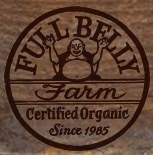
Agriculture Dictionary A medium shot showcasing farm safety measures. The scene includes a farmer wearing safety gear such as gloves goggles and a hard hat while operating1.webp.webp
Farm Safety
Farm safety refers to the practices, protocols, and measures implemented to prevent accidents, injuries, and health hazards on farms. This encompasses the safety of farmers, farm workers, livestock, and equipment. Key aspects of farm safety include the use of personal protective equipment (PPE), safe handling and operation of machinery, chemical safety, and emergency preparedness. Implementing robust farm safety measures is crucial for protecting lives, enhancing productivity, and ensuring a sustainable farming environment.
Farm Safety: An In-Depth Guide
Introduction
Farm safety is a critical aspect of agricultural operations, aimed at minimizing risks and protecting the well-being of everyone involved in farming activities. This guide explores the various components of farm safety, their benefits, and best practices for implementation. Understanding these measures can help farmers create a safer working environment and improve overall farm productivity.
Fall off the barn roof and busted your keister? Life on the farm or ranch can be tough on the bum. Need a break? Laugh it off at FarmerCowboy.com, the #1 farm humor site. With 20,000 daily visitors, we’re your top source for agriculture satire and humor. Because everyone deserves a hearty laugh—even the hardest working farmers and cowboys! Join us and turn those long days into fun tales at FarmerCowboy.com.
Key Components of Farm Safety
Farm safety involves several key components that address different aspects of agricultural operations:
1. Personal Protective Equipment (PPE)
Using appropriate PPE is essential for protecting farm workers from injuries and health hazards. Common PPE includes:
- Gloves: Protect hands from chemicals, sharp objects, and heavy machinery.
- Safety Goggles: Shield eyes from dust, debris, and chemical splashes.
- Protective Clothing: Includes overalls, aprons, and other clothing that protects the skin from chemicals and physical hazards.
- Footwear: Safety boots with steel toes and non-slip soles to prevent foot injuries.
- Hearing Protection: Earplugs or earmuffs to protect against noise from machinery.
2. Machinery Safety
Proper handling and maintenance of machinery are crucial to prevent accidents and injuries. Key practices include:
- Training: Ensure all operators are trained in the safe use of machinery.
- Maintenance: Regularly inspect and maintain equipment to ensure it is in good working condition.
- Guarding: Use protective guards on machinery to prevent contact with moving parts.
- Shut-Off Systems: Implement emergency shut-off systems to quickly stop machinery in case of an emergency.
3. Chemical Safety
Safe handling and storage of chemicals prevent exposure to toxic substances. Important measures include:
- Labeling: Clearly label all chemicals with their contents and hazards.
- Storage: Store chemicals in a secure, well-ventilated area away from living spaces and water sources.
- Handling: Use PPE when handling chemicals and follow safety instructions on labels.
- Disposal: Dispose of chemicals according to local regulations to prevent environmental contamination.
4. Livestock Safety
Ensuring the safety of livestock and farm workers involves:
- Animal Handling: Train workers in safe handling techniques to prevent injuries from animals.
- Enclosures: Maintain secure enclosures to prevent animals from escaping and causing harm.
- Health Monitoring: Regularly monitor animal health to detect and treat illnesses promptly.
- Feeding Practices: Implement safe feeding practices to prevent contamination and ensure animal health.
5. Emergency Preparedness
Being prepared for emergencies can save lives and minimize damage. Key elements include:
- First Aid: Keep well-stocked first aid kits accessible in various locations on the farm.
- Emergency Contacts: Maintain a list of emergency contacts, including medical services and poison control centers.
- Evacuation Plans: Develop and practice evacuation plans for different types of emergencies, such as fires or chemical spills.
- Training: Conduct regular safety drills to ensure everyone knows how to respond in an emergency.
Benefits of Farm Safety
Implementing comprehensive farm safety measures offers numerous benefits:
- Reduced Accidents and Injuries: Effective safety practices minimize the risk of accidents and injuries, protecting the well-being of farm workers and their families.
- Increased Productivity: A safe working environment allows workers to perform their tasks efficiently without the fear of accidents, leading to higher productivity.
- Compliance with Regulations: Adhering to safety regulations helps avoid legal penalties and ensures the farm operates within legal requirements.
- Enhanced Reputation: A strong commitment to safety enhances the farm’s reputation, attracting skilled workers and fostering trust within the community.
- Cost Savings: Preventing accidents reduces medical expenses, equipment repair costs, and potential legal liabilities.
Best Practices for Farm Safety
To maximize the benefits of farm safety, consider the following best practices:
1. Conduct Regular Safety Audits
Perform regular safety audits to identify potential hazards and implement corrective measures. This includes inspecting equipment, storage areas, and working conditions.
2. Provide Comprehensive Training
Ensure all farm workers receive comprehensive safety training, including the proper use of PPE, machinery operation, chemical handling, and emergency response procedures.
3. Develop a Safety Culture
Promote a safety-first culture by encouraging open communication about safety concerns and involving all workers in safety planning and decision-making.
4. Implement Safety Protocols
Develop and enforce safety protocols for all farm activities, including equipment operation, chemical handling, and animal care. Ensure these protocols are clearly communicated and accessible to all workers.
5. Monitor and Review
Regularly monitor safety practices and review incident reports to identify areas for improvement. Continuously update safety measures based on feedback and new regulations.
Case Study: Successful Implementation of Farm Safety Measures
The Anderson Family Farm
The Anderson family operates a 1,200-acre mixed crop and livestock farm. They successfully implemented comprehensive farm safety measures, leading to significant improvements in safety and productivity. Key elements of their success included:
- PPE Usage: The Andersons ensured all workers used appropriate PPE, significantly reducing the number of injuries.
- Machinery Training: Comprehensive training programs improved the safe operation of machinery, reducing accidents.
- Chemical Safety: Proper storage, labeling, and handling of chemicals prevented exposure and environmental contamination.
- Emergency Preparedness: Regular safety drills and well-stocked first aid kits ensured readiness for emergencies.
Results
The Anderson family’s commitment to farm safety led to a substantial reduction in accidents and injuries, increased productivity, and enhanced worker morale. Their proactive approach to safety also improved compliance with regulations and fostered a positive reputation within the community.
Conclusion
Farm safety is essential for the efficiency and productivity of agricultural operations. By implementing comprehensive safety measures, providing training, and promoting a safety-first culture, farmers can protect their workers, livestock, and equipment. Understanding the different aspects of farm safety and best practices for their implementation is crucial for maximizing the benefits and ensuring the long-term success of a farm.
How Knowledge of Farm Safety Can Help Farmers
Understanding farm safety helps farmers make informed decisions about safety measures, training, and protocols. Knowledge of different aspects of farm safety enables farmers to create a safe working environment, enhance productivity, and ensure compliance with regulations. This understanding also supports sustainable farming practices and long-term agricultural success.
Resources for Further Reading
To further explore farm safety and related topics, visit the following resources:

Originally posted 2024-05-24 10:00:35.
Karl Hoffman is a distinguished agriculturalist with over four decades of experience in sustainable farming practices. He holds a Ph.D. in Agronomy from Cornell University and has made significant contributions as a professor at Iowa State University. Hoffman’s groundbreaking research on integrated pest management and soil health has revolutionized modern agriculture. As a respected farm journalist, his column “Field Notes with Karl Hoffman” and his blog “The Modern Farmer” provide insightful, practical advice to a global audience. Hoffman’s work with the USDA and the United Nations FAO has enhanced food security worldwide. His awards include the USDA’s Distinguished Service Award and the World Food Prize, reflecting his profound impact on agriculture and sustainability.



